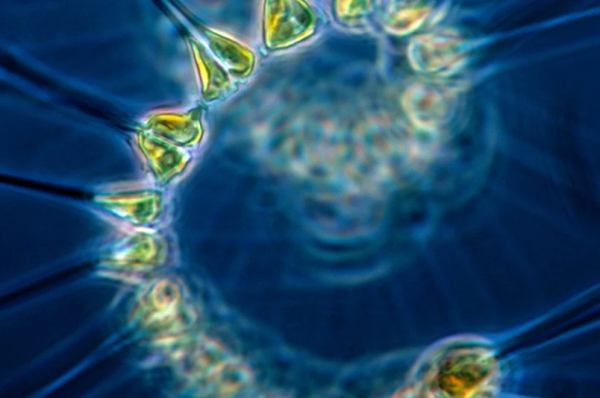Since 1934, the Redfield ratio – the recurring ratio of 106:16:1 of carbon to nitrogen to phosphorus (C:N:P) in phytoplankton and the pathways by which these elements are circulated throughout all parts of the Earth – has been a cornerstone of oceanography. While differences in C:N:P ratios exist and have been observed across ocean biomes, to date there has not been an established way to quantify or predict that variation. However, a new study from a University of Rhode Island professor could help to fill in the blanks for scientists studying and trying to understand these variances.
A new macromolecular model of phytoplankton developed by Keisuke Inomura, URI assistant professor of oceanography, could have implications for climate research. (URI Photo)
The study, published in Nature Geoscience and written by Keisuke Inomura, assistant professor of oceanography in URI’s Graduate School of Oceanography, with a team from the University of Washington, the Massachusetts Institute of Technology and Princeton University, could also have meaningful implications for climate research.
Essential to aquatic ecosystems the world over, phytoplankton provide food for almost all sea life; they also perform photosynthesis – taking in sunlight, water and carbon dioxide and releasing oxygen and carbon. In addition to generating half of the oxygen in our atmosphere, phytoplankton also impact carbon export and storage in the deep ocean, which, in turn, can affect the composition of carbon dioxide in the atmosphere. Carbon export is substantially influenced by C:N:P ratios because the ratio indicates how much carbon is produced in relation to available nutrients (i.e., nitrogen and phosphorus).
Read more at: University of Rhode Island
In addition to generating half the oxygen in our atmosphere, phytoplankton are central to carbon export and storage in the deep ocean. A new study helps predict Redfield ratio variations. (Photo credit: NOAA)


